Biennials are a smaller group of plants that have a two-year growth cycle. Following is some more information about biennial plants along with their characteristics and a list of biennial vegetables and flowering plants.
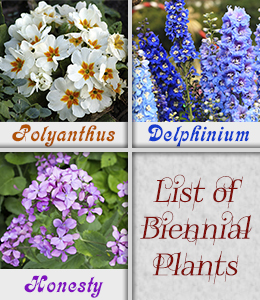
If biennials are planted in a location that can aid in reseeding, you can have a full foliage of these plants every year. Owning a garden filled with gorgeous and colorful flowers or having your own little vegetable garden is the pride and joy of any gardener. You really cannot compare the feeling you derive when the fruits of your labor are the envy of others.
Biennial plants are one such envy-worthy plants you would like to have growing around your home. You can also choose to make your neighbors jealous by growing your own vegetables or then really fume with jealousy with an array of colorful and fragrant flowers, attracting butterflies and birds.
However, these plants come with a small hitch, as patience is required to see these plants grow and flower, and they are ideal for dedicated and devoted gardeners only. But once all is done, the fruits of your labor are well-paid off by the beautiful blossoms and delicious vegetables. Following is some information along with a list of these beautiful biennials.
Information and Characteristics of Biennial Plants
Biennials refer to the plant's longevity. They take two years to complete their life cycle. A biennial plant's life cycle begins as seeds which later produces the roots, stems, and leaves.
In the first season, their growth results in a small rosette of leaves close to the soil. The next year, i.e., during their second season, they begin to grow, flower, and seed, which is soon followed by the death of the entire plant.
During the long growth period of the plant, it prepares itself to grow and bloom as it conserves its energy to develop complex flower structures, produces a large amount of seeds, and becomes mowing and/or grazing resistant. Below are some characteristics of biyearly plants.
✿ Biennials have a late season growth at ground level and they continue to grow even in spring.
✿ They bloom in the late spring and summer and sport beautiful flowers on tall spikes.
✿ They have significant seed production, and their seedlings emerge again between late summer and fall.
List of Biyearly Flowering Plants
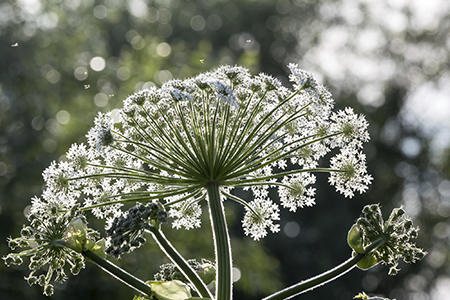
- Angelica
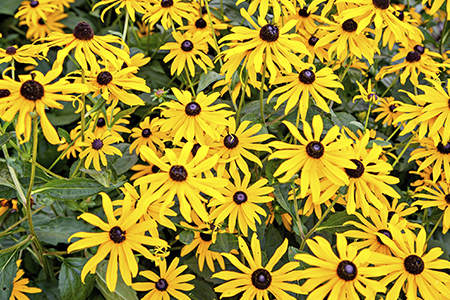
- Black-eyed Susan
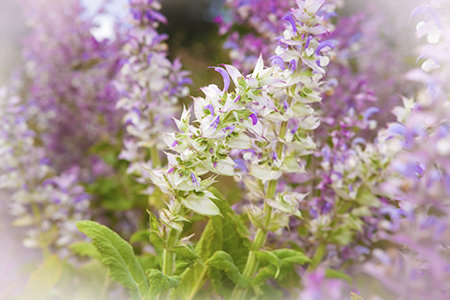
- Clary Sage
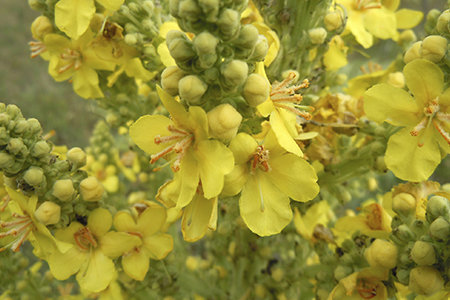
- Common Mullein
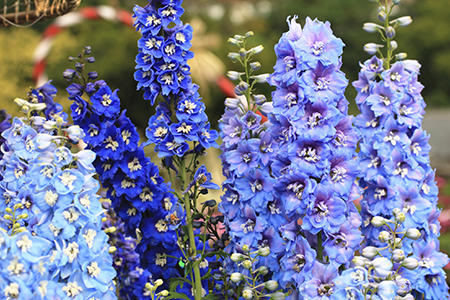
- Delphinium
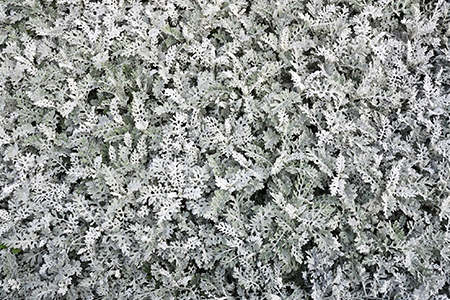
- Dusty Miller
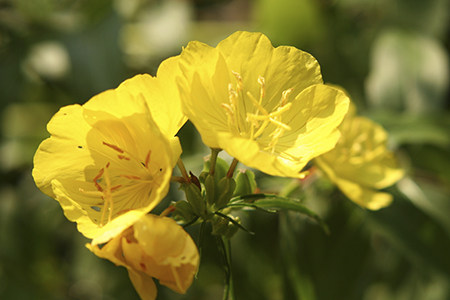
- Evening Primrose
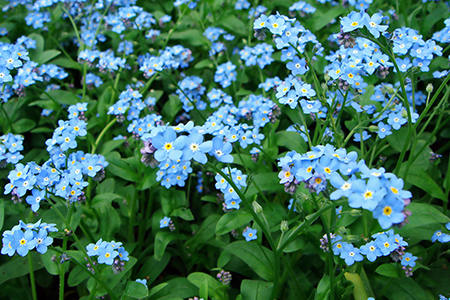
- Forget-Me-Not
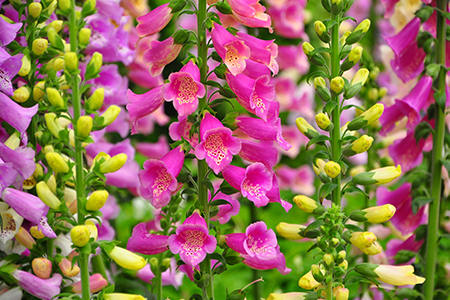
- Foxglove
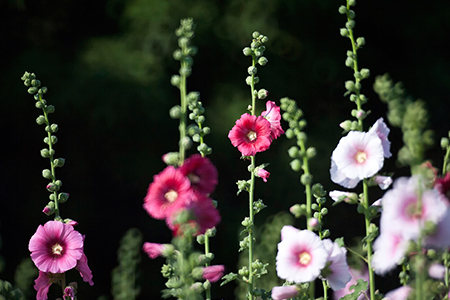
- Hollyhock
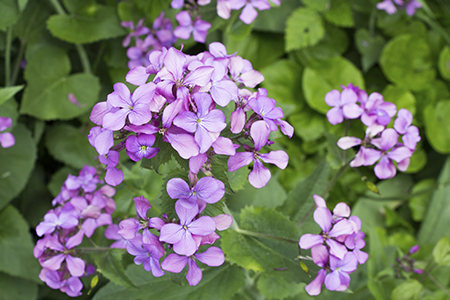
- Lunaria
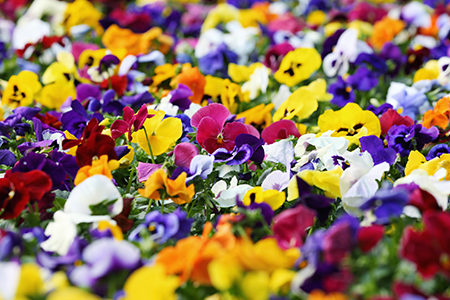
- Pansy
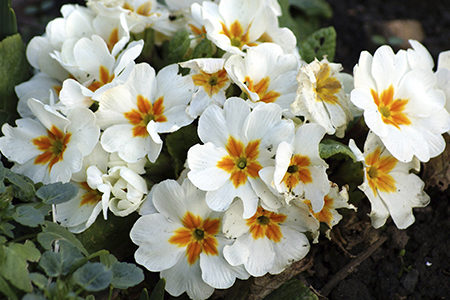
- Polyanthus
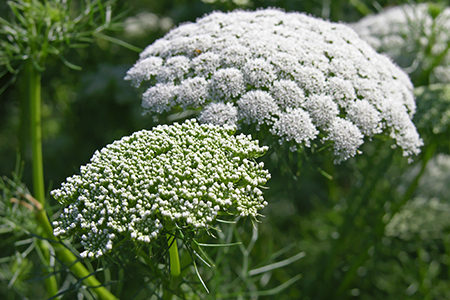
- Queen Anne's Lace
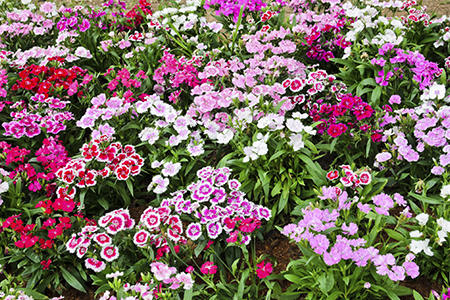
- Sweet William
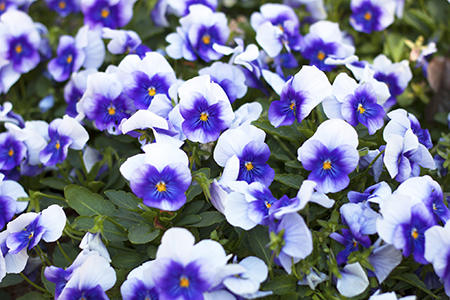
- Viola


AngelicaAngelica are large and upright plants, which grow up to a height of around 6 feet, thus making them ideal plants to be used as accents to give any garden a dark and shady border. They are attractive, large, and showy, especially once they flower, displaying their greenish-white flowers decorating the tips. The leaves, flower stems, and seeds have a lot of culinary uses, while the roots are used to make medicines and liquor.
Black-eyed SusanBlack-eyed Susans grow over 3 feet tall. They are known for their flowers, which are bright golden yellow in color with a large brownish-purple center. These flowers are 2 - 3 inches wide and grow in a stalk. These plants are very competitive and push other plants out.
California PoppyThese plants spread quickly and yield beautiful bright red, yellow, pink, white, and orange flowers. They grow up to a foot in height. The flowers tend to close at night or when it rains.
Canterbury BellsCanterbury bells are often found partially shaded. They come in an array of colors, viz., pink, white, purple, blue, lavender, and white cup and saucer. These plants grow up to a height of around 3 feet and bloom in late spring or early midsummer.
Clary SageClary sage is a fast growing and fragrant flower. Its height and beauty makes it ideal as an additional border. It can grow up to 4 feet in height and is found in shades of white, pinks, mauve, and violets.
Common MulleinCommon Mullein are weeds that are usually found in waste places. They can practically grow anywhere like roadsides, near streams, in fields, gardens, and forests. The plant is known for its tall flower spike, which can grow to around 10 feet in height. However, not all flowers bloom, making them less attractive to many. The flowers that do bloom have a beautiful golden yellow color with 5 petals each, and they span up to an inch wide.
DelphiniumDelphiniums look like they have stepped out of a storybook―they are almost picture perfect. The flower's spike comes in shades of pink, white, purple, and blue. These plants have a tendency to grow very tall and can grow up to a height of 20 feet.
Dusty MillerDusty Millers are a favorite of many because they go well with everything. They grow up to about 3 feet and are deer-resistant and drought-tolerant. To top that, they require low maintenance.
Evening Primrose Evening primrose has a light lemon scent that's ideal for a large bright yellow flower with four petals. It has a hair stem with branched stems from the basal rosette.
Forget-Me-Not Forget-me-nots are known for their distinct delicate sky-blue color, which bloom in the spring. However, they can be found in white and pink colors. They form low mounds of grayish-green leaves, full of clusters of flowers. They prefer cool and shaded areas with moisture and well-drained soil. They grow to a height of about 8 inches.
FoxgloveFoxgloves are found in an array of colors and shades, viz., blue, while, pink, etc. These plants require a rich, moist, well-drained soil, with a light shade to grow to their fullest.
HollyhockHollyhocks are a tall spike plant, which grow up to a height of 8 feet. The blooms come in an array of colors, viz., red, yellow, white, pink, and violet. You can also find them in a double color and size.
Lunaria or Honesty Many know Lunaria as Honesty. It is also called the money plant and is spotted in many gardens. That's because this plant has fascinating seedpods that grow on the side of a large coin, which is translucent and shimmery. The flowers are fragrant, visually attractive, and come in shades of blue, pink, and white.
PansyPansies are from the Viola genus. They are often found in an array of colors, viz., white, red, orange, pink, and blue. They grow up to around 3 inches in height and bring in the splash of color that every garden requires.
Queen Anne's LaceQueen Anne's Lace is also called Wild Carrot. This plant can grow up to the height of 4 - 5 feet. The flowers are mostly white in color, but you can see some in pink. Queen Anne's Lace was used as antiseptic diuretics to treat skin diseases. The seed was used to help wash out urinary stones, the roots were used as antacids, and poultice of the roots were used to relieve itching.
Sweet WilliamSweet William is small, usually only a couple of inches tall, and has a distinct spicy fragrance of cloves and cinnamon. The flowers are usually bright and found in hues of pink, magenta, salmon, red, and white.
ViolaViolas grow up to a foot in height and are found in colors of violet, blue, and yellow. They have a dark green foliage accentuating the color of the flowers, which grow slightly above the foliage.
WallflowerWallflowers are a native of Southern Europe and are often seen on old walls or cliffs; hence the appropriate name, 'wallflower'. The plant grows up to 3 feet in height. Their flowers consist of 4 petals and 4 sepals and are around 2 inches wide. They are mostly seen in shades of yellow and orange.
Yellow Horned PoppyThese biennials have four silky petals, closely cocooned by long curved seedpods. They are often found with grayish-green leaves that are covered with short hair-like fuzz.
List of Biennial Vegetables
Vegetables, the ones given below, are some biennials that you have probably come across.
✿ Beetroots
✿ Brussels sprouts
✿ Cabbages
✿ Caraways
✿ Carrots
✿ Onions✿ Celery
✿ Parsley
✿ Parsnips
✿ Silver-beet
✿ Turnips






 If biennials are planted in a location that can aid in reseeding, you can have a full foliage of these plants every year. Owning a garden filled with gorgeous and colorful flowers or having your own little vegetable garden is the pride and joy of any gardener. You really cannot compare the feeling you derive when the fruits of your labor are the envy of others.
If biennials are planted in a location that can aid in reseeding, you can have a full foliage of these plants every year. Owning a garden filled with gorgeous and colorful flowers or having your own little vegetable garden is the pride and joy of any gardener. You really cannot compare the feeling you derive when the fruits of your labor are the envy of others.
















